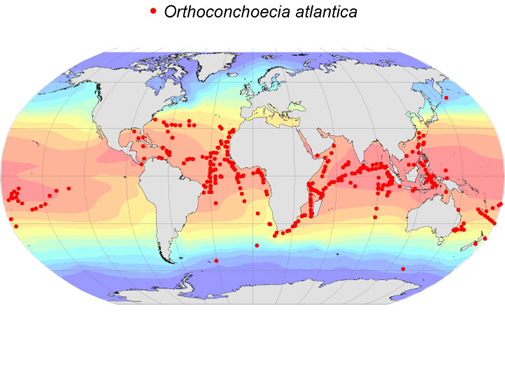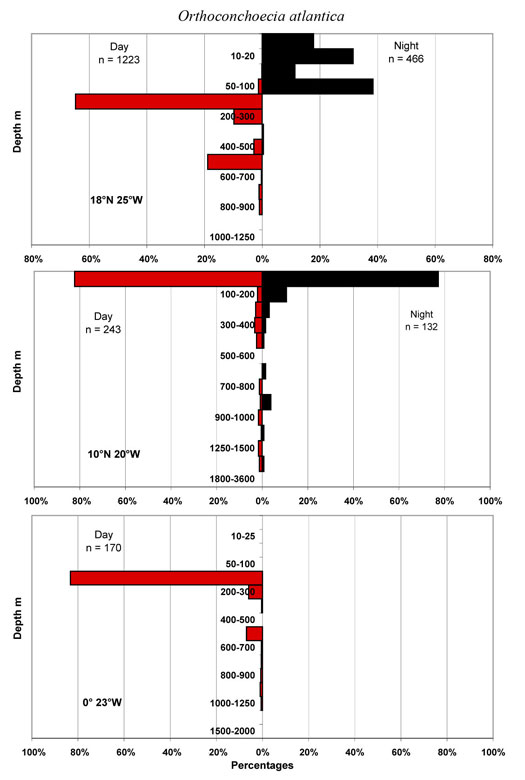Notes
511 records
This large and very characteristically shaped species is amongst the most regularly reported of all halocyprids. This suggests that the species has often been identified on sight and not thoroughly investigated, so may include cryptic species. Vavra (1906) gave 24 records for O. agassizi, which otherwise has not been recorded from outside the Pacific - the only species with which is might have been confused is atlantica. There are marked differences between the sizes of Atlantic specimens and the small sample of Indian Ocean specimens given below. Poulsen (1973) also gives size data that imply that there may be cryptic species. Lubbock’s original material came from the Atlantic, but without designating a type locality. Its recorded latitudinal range in the Atlantic is 35°N to 53°S, but extends to 50°N and 58°S in the Pacific. In the Northeast Atlantic it was taken in greatest numbers at 18°N in the Discovery vertical series along 20°W, but at much lower abundances both to the north and to the south. The bathymetric profiles show that by day it is a shallow mesopelagic species with a range of 100-300m for juvenile instars and 400-500m for adults, and at night they are concentrated in the upper 100m. Juveniles are very occasionally taken in neuston samples.
| Equator
|
n
|
Mean mm
|
s.d.
|
Range mm
|
|---|
| Female
|
62
|
3.74
|
0.082
|
3.52-3.92
|
|---|
| Male
| 14
|
3.69
|
0.077
|
3.48-3.80
|
|---|
| A-1
|
8
|
2.37
|
0.080
|
2.26-2.50
|
|---|
| A-2
|
20
|
1.45
|
0.048
|
1.36-1.54
|
|---|
| A-3
|
36
|
0.94
|
0.023
|
0.90-1.00
|
|---|
| A-4
|
69
|
0.66
|
0.015
|
0.62-0.70
|
|---|
| Bermuda
|
n
|
Mean mm
|
s.d.
|
Range mm
|
|---|
| Female
|
26
|
3.68
|
0.102
|
3.44-3.80
|
|---|
| Male
|
18
|
3.66
|
0.058
|
3.52-3.76
|
|---|
| A-1
|
14
|
2.52
|
0.101
|
2.32-2.64
|
|---|
| A-2
|
12
|
1.55
|
0.065
|
1.48-1.64
|
|---|
| A-3
|
22
|
0.96
|
0.050
|
0.86-1.08
|
|---|
| A-4
|
26
|
0.69
|
0.025
|
0.64-0.76
|
|---|
| Indian O.
|
n
|
Mean mm
|
s.d.
|
Range mm
|
|---|
| Female
|
19
|
3.34
|
0.108
|
3.16-3.56
|
|---|
| Male
|
10
|
3.23
|
0.094
|
3.04-3.40
|
|---|
| A-1
|
1
|
2.64
|
0.000
|
2.60-2.60
|
|---|
| A-2
|
|
|
|
|
|---|





